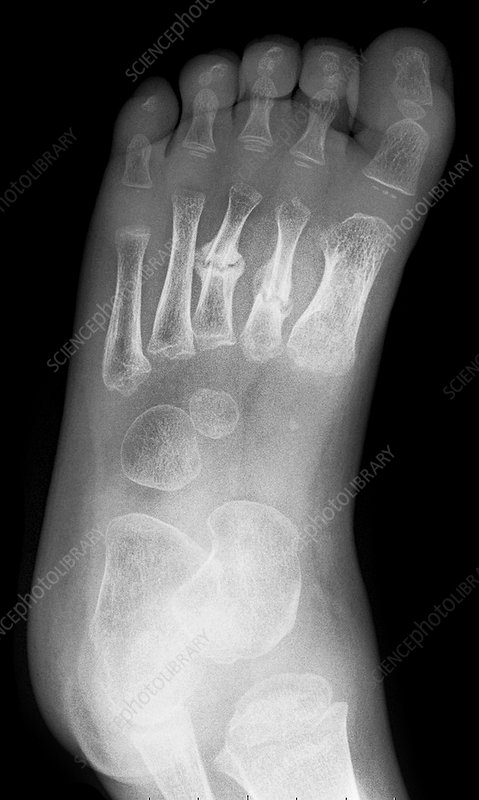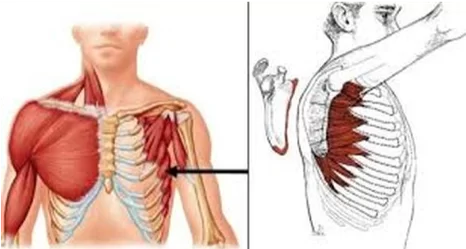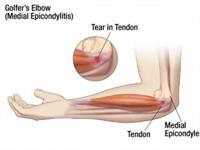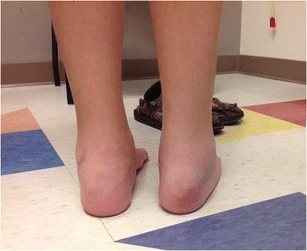Fracture on Top of The Foot
Overview
- A Fracture on Top of The Foot can affect one or more of the following: the two small spherical bones at the base of the big toe (sesamoid fractures), the middle bones of the foot (metatarsal fractures), the rear bones of the foot, including fractures of the heel bone (calcaneus).
- Overuse, trauma, or high arches can all lead to these fractures. Your broken bone may be treated surgically or with a cast, boot, or shoe by the providers.
- You can shorten the healing period by applying ice, avoiding bearing weight on your foot, and elevating your foot.
- The 26 bones that make up each foot cooperate to maintain the body’s weight and carry out a variety of daily tasks.
- One or more of the bones in your foot may break or fracture if you fall or suffer any other type of acute injury.
- The degree of foot fractures can vary, ranging from minor stress fractures to total breaks. The lengthy bones just behind the toes—also referred to as the metatarsals—are the site of one of the most frequent kinds of foot fractures.
Causes of Fracture on Top of The Foot
- This could result from a direct injury to the foot. This could occur, for instance, if someone kicks or steps on the foot, drops something on the foot, or falls on the foot.
- Fractures of the base of the fifth metatarsal can also result from twisting of the foot or ankle. In this injury, a piece of bone is pulled off by the twisting mechanism pulling on a strong ligament attached to the base of the fifth metatarsal.
- When a foot twists during a jump landing, it frequently injures the metatarsal shaft. This is a typical issue that ballet dancers face.
- cracks from stress
- Usually, this kind of metatarsal fracture results from Recurrent stress to the bone, another word for overuse.
- Long-distance running or marching, particularly when carrying heavy packs (hence the term “march fractures”). As a result, although they can affect any runner, even one who runs infrequently, they are frequently encountered by athletes and sportspeople. In the military, they are frequently observed during training exercises.
- Runners who: Abruptly increase their running mileage or intensity are more likely to suffer stress fractures.
- Run in inappropriate shoes that are too small for them.
- Make an abrupt shoe change.
- haven’t ‘broken them in’ properly; they recently switched running shoes.
- Even if you are experiencing foot pain, keep exercising.
- Running shoe demands and preferences differ among individuals. Take guidance, though, before deciding on something out of the ordinary, like corrective shoes or barefoot shoes. For instance, you must learn the proper form if you want to run barefoot.
- It’s advisable to break in new running shoes gradually because switching up your footwear too soon might lead to many ailments. They are also commonly observed in gymnasts and ballet dancers.
- Stress fractures can be more common in cases of anomalies with the anatomy of the foot as well as abnormalities involving the bones and joints, such as osteoporosis or rheumatoid arthritis.
- They can also happen to persons who have neurological conditions that have impacted their feet, such as diabetes, which has affected the nerves in their feet.
Symptoms of Fracture on Top of The Foot
If you break your foot, you’ll probably feel like this:
- a sudden, intense foot ache
- Bloating
- Sensitivity
- bruising
- Soreness that gets worse when you move
- Having trouble standing and walking on the damaged foot
- Even though you could have heard or felt something shatter at the moment of the accident, it doesn’t always indicate you broke.
Acute metatarsal fracture
- Because of its excellent localization at the site of impact to the bone, the pain is frequently referred to as “pinpoint pain.”
- Because broken bones bleed, you may experience bruising, edema, and trouble bearing weight on the injured foot.
- Your foot may have restricted movement. Pain, though, can surprisingly go away in a few hours.
- It’s a common misconception that one cannot walk on a fractured foot, however, this is untrue.
- Depending on which bone is broken (and where along its length), if the fracture is displaced, how supportive your shoes are, and how much pain you can handle, you may or could have a fractured foot and be able to walk or not.
- Therefore, walking on a fractured foot is conceivable, though it is probably uncomfortable to do so, and doing so can make things worse.
Stress Fracture
- Similar symptoms to those of acute metatarsal fractures (see above), but typically without any bruises or cracking noise.
- Initially, the primary symptom might only be foot soreness that goes away with rest when exercising. The foot typically experiences diffuse, all-over pain.
- Eventually, the pain might become constant and cease to be alleviated by resting. The discomfort gradually gets worse and the uncomfortable spot tends to become more restricted to the fracture site.
- Usually, the second or third metatarsal bone line is sensitive where the stress fracture occurs.
- While there is typically no bruising, there may be some swelling.
- Stress fracture sufferers might keep walking for a while.
- This eventually gets more painful since the bone’s splits tend to get worse and the bone itself starts to react by getting inflamed, making it potentially unable to bear weight. A full-thickness fracture may develop from a metatarsal stress fracture.
Different types of foot fractures
Ankle Fracture
- varieties of fractures in the foot type A ankle there must be at least one break in the talus, fibula, or tibia to have an ankle fracture. There are two joints in the ankle: the joint connecting the tibia and fibula and the point where these three bones converge.
- These characteristics need to be properly diagnosed and treated because they can cause instability. If not, you can run into more issues.
- The majority of the time, typical foot fractures result from the ankle bearing all of your body weight plus additional strain from activities like running, jumping, and sports.
- Foot fractures can happen in a variety of settings. There are a few typical symptoms to watch out for. Among these include protruding bones (compound fractures), the incapacity to kinds of fractures in the foot ankle kind AA minimum of one break in the talus, fibula, or tibia is present in an ankle fracture.
- The location where these three bones connect and the junction between the tibia and fibula are the two ankle joints. Due to the potential for instability, these characteristics need to be properly diagnosed and treated. You might run into more issues if you don’t.
- Common foot fractures typically occur as a result of the ankle supporting all of your body weight plus extra strain from activities like running, jumping, and sports.
- There are numerous settings in which foot bone fractures might occur. A few typical signs should be recognized. Compound fractures are characterized by projecting bones, and the inability to apply weight on the ankle to check for bruising, swelling, discomfort, and tenderness.
- An orthopedic surgeon will first ask you about your symptoms if you think you may have a fractured foot or ankle, and then they will determine the best course of treatment. To assess the extent of the injury, X-rays can be required. In other situations, a CT or MRI scan will be required.
- The ideal course of therapy will depend on the type of fracture. The majority of the time, physical therapy will be administered after the usage of a cast or splint.
Bone Fractures in the Heels
- Beneath the ankle joint is the calcaneus, or heel bone. It is the biggest bone in the tarsus. It also comprises the subtalar joint, which allows the hindfoot to move laterally. This movement is necessary for balance, particularly in uneven terrain.
- This fractured limb is rather less frequent and has multiple causes. This fracture may happen, for example, if you fall from a large height and land on your feet. During an event such as this, the heel may get wider and shorter when weight is placed on it.
- A fracture can cause several symptoms, including fractures to the heel bone. The inability to bear weight on the heel, bruising, swelling, and pain are a few of the most typical ones.
- For a heel bone fracture, your symptoms will be examined to ascertain the most appropriate course of therapy. X-rays and CT scans can be required to look into the fracture more thoroughly.
- The kind and severity of the fracture determine the treatment options. Having surgery, getting physical therapy, or using a brace or cast are among the alternatives.
- The five metatarsal bones of each foot join the toes to the ankle. By supporting the foot, these bones improve balance when standing or walking. These fractures are typical, and football players are particularly susceptible to them.
- This fracture could result from a fall or from being kicked or trodden on. An abrupt twist to the foot might also result in a fracture. Stress fractures, or tiny fissures in the bone, are another result of overusing the bones.
- There may occasionally be a cracking sound made at the site of the damage. In addition to discomfort and tenderness, there will be swelling and bruises. It could be difficult to put weight on the foot, and movement might be limited. Sometimes, the suffering will improve in one to two hours.
- Consultation with a podiatrist is the first step in the diagnosing process for fractures affecting lower leg bones. We will discuss symptoms to determine the best course of action. When necessary, x-rays and CT scans may also be performed.
- Painkillers, cold packs, and plaster casts could be required if the fracture is complex. In some situations, surgery is necessary to avoid long-term problems.
- This most frequently occurs when there are misplaced bones. The break will be fixed, but to guarantee optimal healing, you might need to attend physical therapy.
Which variables put one at risk for a foot fracture?
Your chance of suffering a foot fracture can be elevated by multiple factors:
Physical factors
- You are more likely to break a bone in your foot if you have osteoporosis, the female athlete triad, or diminished sensation in your feet.
Sports involvement
- Engaging in high-impact sports (such as soccer, skiing, football, hockey, and gymnastics) that might cause repetitive strain, twisting, or impacts to the foot increases the risk of developing a foot fracture.
Increased activity suddenly
- Playing sports or engaging in other activities that place a lot of stress on the foot increases your risk of
- Inappropriate usage of sports equipment and techniques can result in falls and stress fractures among other ailments. Equipment that is not suited correctly can also cause these kinds of problems.
Diagnosis
- While every foot fracture is unique, in general, surgery is likely to be beneficial if the fracture is greatly displaced.
- This is particularly true if the joint surface is damaged and displaced due to a fracture that enters the joint. Future issues like discomfort, edema, deformity, and arthritis can be avoided by realigning the fracture and stabilizing it in the proper location.
- For non-displaced or mildly displaced fractures, surgery might be necessary in some situations if the broken bones are likely to become unstable. In some situations, surgery can help keep the alignment stable and promote proper healing.
- Surgery may be beneficial for some fractures, including those that are stable and non-displaced. A type of fracture known as a Jones fracture is frequently managed surgically in both active and athletic individuals because it is likely to get them back to their activities more quickly than non-surgical treatment.
- Your doctor may suggest non-surgical treatment if the dangers of surgery exceed the possible advantages. This choice is based on knowledge of your entire body, including any underlying medical issues.
- For instance, if you have a history of cardiac issues, your surgeon might advise against surgery and instead suggest that you contact a cardiologist to find out whether surgery is safe to have before moving further.
Acute metatarsal fractures
- appear on a standard X-ray.
- The bone may have one little break that doesn’t penetrate all the way through, or it may have several microscopic fractures and splits.
- The bone may have not reacted to the injury that much because of how slowly they have formed. An X-ray may not reveal a fracture that can be detected by a specialist ultrasonic scan.
- The most common way to detect metatarsal stress fractures is using a bone scan.
Stress fractures
- occasionally be detected by MRI scanning. appear on a standard X-ray.
- The bone may have one little break that doesn’t penetrate all the way through, or it may have several microscopic fractures and splits.
- The bone may have not reacted to the injury that much because of how slowly they have formed. An X-ray may not reveal a fracture that can be detected by a specialist ultrasonic scan.
- The most common way to detect metatarsal stress fractures is using a bone scan.
- Stress fractures can also occasionally be detected by MRI scanning.
Treatment of Fracture on Top of The Foot
Non-Surgical Treatment
- Simple painkillers: medicines that help reduce pain include paracetamol and non-steroidal anti-inflammatory medicines like ibuprofen.
- Ice: Another useful technique for pain alleviation is to apply ice to your foot. As soon as possible after an injury, ice should be placed and left on for 10 to 30 minutes. (Less than ten minutes doesn’t matter. Over 30 minutes could harm the skin.) You can use a bag of frozen peas or wrap ice cubes in a plastic bag or towel to make an ice pack.
- Ice burns can result from placing ice too close to the skin. Apply the ice pack to the damaged area gently. It is believed that the cold will lessen blood flow to the injured area. This could lessen bruising, discomfort, and inflammation.
- Some medical professionals advise reapplying for 15 minutes (every two hours) during the first 48 to 72 hours (during the day). Avoid sleeping with ice on
- Rest and elevate: The primary goal of elevation is to contain and lessen any edema. For instance, when you’re seated, raise your foot on a chair so that it’s at least hip level. Place a pillow under your foot when you’re in bed. Even in cases of severe fracture, rest is sometimes the only course of therapy required.
- Give your foot less stress: Refraining from the action that resulted in the stress fracture is crucial for your recovery if you have been diagnosed with one. This could entail the use of a wheelchair, crutches, or a short-leg walking cast.
- Immobilization: Support is all that is necessary for certain fractures to heal. For instance, wearing a stiff, supportive shoe or boot with an elastic tube bandage for support. Special shoes are provided to assist in immobilizing the fracture if necessary.
- Provide support for the foot to enable you to walk.
- As soon as pain permits, progressive weight bearing on the foot can be resumed. A plaster cast below the knee can be necessary for treating further fractures.
Surgery
- During foot fracture surgery, the skin is incised in the middle of the broken bone. The fracture is then visible to the orthopedic surgeon because of the exposure of the bone.
- The broken pieces of bone are straightened as best they can be and fastened with implants, which include plates, screws, wires, and pins.
- Your surgeon will stitch the incision closed, apply a sterile bandage, and place your foot in a cast, splint, boot, or post-operative shoe once the fracture has been stabilized.
- In certain cases, the surgeon can realign a fractured bone without making a big incision. Using one or more little incisions, the fracture is repaired with the proper implants in this procedure.
- A percutaneous fracture fixation is what is meant by this. This technique’s benefits include fewer incisions and less disruption to the blood supply of the bone.
- Reduction is a typical manipulation treatment used by doctors to realign a fractured foot bone so that it heals properly.
Recovery
- our foot may be placed in a cast, splint, boot, or post-operative shoe by your foot and ankle orthopedic surgeon following surgery. To lessen pain and swelling, it’s critical to keep your foot elevated as much as possible.
- Depending on the damage, your doctor may typically also want you to avoid walking for one to three months.
- Your surgeon will inspect the incision and take out the stitches a few weeks following the procedure. Your surgeon could advise you to start practicing ankle, foot, and toe range-of-motion exercises. You might also be sent to a physical therapist by them.
- To monitor how effectively the fracture is healing, your doctor will examine you regularly and review X-rays. Considering your type of fracture and Following this assessment, your surgeon will determine whether you’re ready to start putting weight on the affected foot.
- When your symptoms permit, they might have you start weight-bearing in a special boot and gradually transition to your regular shoes. It often takes three to six months or longer to return to full activity without limitations, and it may take up to a year to reach maximum recovery.
Risks and Complications
- There is always a chance of complications after surgery, such as anesthesia-related hazards, infection, harm to blood vessels and nerves, bleeding, or blood clots. After surgery, you might be prescribed aspirin or a blood-thinning drug for a few weeks to reduce the risk of blood clots.
- Unfortunately, blood clots can still happen after surgery even if you are taking these medications.
- Foot fracture surgery may result in wound failure, nonunion (fracture not healing), malunion (fracture healing in the wrong position), alignment loss before healing, implant failure, arthritis, chronic discomfort, and loss of motion.
- One major risk factor for several problems is smoking. Before doing surgery, your surgeon will talk to you about any smoking you may have.
- Your first port of call for foot injuries should be foot and ankle orthopedic surgeons, as they are specially trained to diagnose and treat foot fractures.
- If repeated stress is applied to the metatarsal bone, the fracture may worsen over time. In time, it might develop into a full-thickness metatarsal fracture.
- Later on, arthritis in the big toe joint may result from a fracture of the first metatarsal bone.
- Because it’s frequently misdiagnosed as an ankle sprain, a fracture at the base of the fifth metatarsal bone isn’t given enough rest or support. This may result in issues with healing and ongoing discomfort.
- A displaced full-thickness fracture that is not “put back” into line might heal “out of shape,” resulting in a foot deformity that can occasionally make it difficult to fit shoes. There could be soreness in the foot.
- Occasionally, an acute metatarsal fracture can result in “non-union,” which is the separation of the two ends of the fractured bone.
- They cannot cure each other; movement between them prevents this from happening. This could result in the foot’s diminished capacity to withstand the strains and pressures of walking and running, as well as persistent foot pain.
Physiotherapy Treatment
- Depending on the broken bone’s nature and location, there are many treatment options for broken feet. While some fractured foot bones can be fixed with crutches and flat-bottom shoes, others need to be fixed surgically with splints or casts.
- When one foot hurts, crutches are used to help one walk.
- It’s crucial that crutches fit properly and are used appropriately when walking. Your physician should fit you for crutches and demonstrate how to use them.
- It’s crucial to support your weight with your hands and arms when using crutches. Avoid bearing your entire weight on your armpits or underarms. This could aggravate the nerves beneath your arms.
- Use your crutches solely on solid ground to prevent falls.
- Whether or not you should put any weight on your damaged foot will be determined by your doctor.
- To use crutches in a “non-weight bearing” manner, you must always walk with your damaged leg’s knee bent to prevent the afflicted foot from ever touching the floor. Keep it away from it, not even if it helps you balance.
- When using crutches for “partial weight bearing” or “weight bearing as tolerated,” you can place some of your weight on the crutches and some on your damaged foot.
- This allows you to use crutches for “partial weight bearing” or “weight bearing as tolerated.” With crutches, always allow your wounded leg to swing. Put more weight on the crutches and less on your wounded foot if walking causes pain.
Preventions
- Improve the duration and level of difficulty in your physical activity gradually.
- Every training program needs to include time for rest and recuperation.
- Your running style should be matched with footwear that fits properly. You should be taught how to modify your style if you decide to go from supportive training shoes to barefoot running shoes, for instance. Practice this method gradually.
- You shouldn’t keep running on a hurting foot and should be mindful of the signs of stress fractures.
- The length of time you must miss from activities might be shortened if stress fractures are promptly diagnosed and treated.
- Steel-toed protection boots are essential for construction workers and other individuals who are susceptible to foot injuries.
- Athletic shoes that fit properly and provide support are essential for playing sports.
- It is not acceptable for passengers to put their feet up on the dashboard or dangle them out the window when they are in a car.
Summary
A break or a tiny, hairline crack to one of the foot’s metatarsal bones is known as a metatarsal fracture. This kind of fracture is typically caused by repetitive stress on the foot’s bones. It can also occur when someone abruptly changes course or leaps, twisting their foot or ankle in the incorrect direction.
FAQ
Can you walk with your foot fractured at the top?
Walking may be possible for a patient with a fractured metatarsal, depending on how painful the condition is.
How do you fix a broken bone on the top of your foot?
Decrease. Reduction is a typical manipulation treatment used by doctors to realign a fractured foot bone so that it heals properly. Immobilization. …
Taking anti-inflammatory medications. …
Applying ice and elevating the leg. …
Physical therapy.
How do I know if my foot injury is serious?
feel excruciating pain or edema, particularly following an injury. possess an open wound or a pus-filled wound. Have a temperature higher than 100 F (37.8 C) or exhibit symptoms of infection, such as redness, warmth, and pain in the afflicted area. are unable to place weight on the foot or walk.
Can a broken foot heal in 2 weeks?
It can take you up to eight weeks to recover completely. A crucial component of your treatment and security is follow-up care.
References
- Broken foot – Symptoms and causes – Mayo Clinic. (2022, April 20). Mayo Clinic. https://www.mayoclinic.org/diseases-conditions/broken-foot/symptoms-causes/syc-20355492
- Willacy, H. (2023, April 5). Metatarsal Fractures. https://patient.info/foot-care/heel-and-foot-pain-plantar-fasciitis/metatarsal-fractures
- Campagne, D. (2023, December 6). Foot Fractures. MSD Manual Consumer Version. https://www.msdmanuals.com/en-in/home/injuries-and-poisoning/fractures/foot-fractures
- Ankle, C. F. A. (2023, July 14). Different Types of Foot Fractures: Compared and Contrasted. Certified Foot and ankle Specialists. https://certifiedfoot.com/different-types-foot-fractures-compared-contrasted/
- Broken Foot. (2006, December 31). WebMD. https://www.webmd.com/a-to-z-guides/broken-foot







